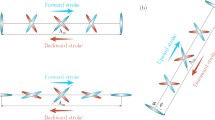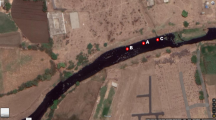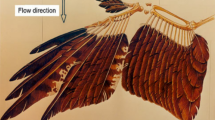Abstract
The stability and control characteristics of two twin-lift helicopter configurations are analyzed in this paper. In order to address the issue of configuration selection from a handling qualities viewpoint, their open-and closed-loop characteristics are compared. The two twin-lift configurations considered are the twin-lift with spreader bar and twin-lift without spreader bar. The nonlinear models describing the dynamics of these two configurations in the lateral/vertical plane are derived. The open-loop characteristics of the two systems are compared by linearizing the nonlinear models about a symmetric hovering equilibrium condition. The closed-loop characteristics of the two systems are compared using nonlinear controllers based on feedback linearization schemes. The performance of the resulting closed-loop systems in carrying out a typical twin-lift mission is evaluated through nonlinear simulation. Also, the effects of helicopter performance degradation and measurement errors on the overall system performance are discussed.
[B] Matrix multiplying the control vector in the nonlinear model
[B1] Matrix multiplying the control vector in the linear model
[C] Matrix defining vector of variables to be controlled
[C1] Damping matrix
CijElement of the damping matrix
e Parameter used in the linear model = M 1 h 1/I 1=M 2 h 2/I 2,/ft
{f} Vector independent of controls in the nonlinear model
g Acceleration due to gravity, ft/sec2
h1, h2Distance of tether attachment point to the center of gravity for helicopters 1 and 2, ft
h Parameter used in the linear model, =h 1=h 2, ft
h′ Distance between rotor hub and the helicopter center of gravity, ft
h h/l′
H Distance of the load from the spreader bar c.g., ft
H1, H2Length of tethers 1 and 2, ft
IRMass moment of inertia of spreader bar, slug-ft2
I1, I2Roll moments of inertia of helicopters 1 and 2, slug-ft2
k′ Non-dimensional hub control moment coefficient
KDDerivative gains
KIIntegral gains
KPProportional gains
[Ki] Stiffness matrix
KijElement of the stiffness matrix
l′ Parameter used in the linear model, =H 1=H 2, ft
L Spreader bar length, ft
Similar content being viewed by others
References
Meier, W. H. and Olson, J. R., ‘Efficient sizing of a cargo rotorcraft’, Journal of Aircraft 25, 1988, 538–543.
Sheridan, P. F., ‘Feasibility study for multiple helicopter heavy lift systems’, Vertol Report R-136, Vertol Aircraft Corporation, October 1957.
Meek, T., Jr. and Chesley, G. B., ‘Twin helicopter lift system study and feasibility demonstration’, Sikorsky Engineering Report No. 64323, December 1970.
Maciolek, J. R., ‘Multi-lift aircraft control system’, U.S. Patent No. 3,746,279, July 1973.
Carter, E. S., ‘Implication of heavy lift helicopter size effect trends and multilift options for filling the need’, in Proceedings of the Eighth European Rotorcraft Forum, Aix-en-Province, France, September 1982.
Curtiss, H. C., Jr. and Warburton, F. W., ‘Stability and control of the twin lift helicopter system’, in Proceedings of the 40th Annual Forum of the AHS, Arlington, Virginia, May 1984.
Meyer, G., Su, R., and Hunt, L. R., ‘Application of nonlinear transformations to automatic flight control’, Automatica 20, 1984, 103–107.
Menon P. K. A., Schrage, D. P., and Prasad, J. V. R., ‘Nonlinear control of a twin-lift helicopter configuration’, in Proceedings of the AIAA Guidance, Navigation, and Control Conference, Minneapolis, Minnesota, August 1988.
Hilbert, K. B., ‘A mathematical model of the UH-60 helicopter’, NASA TM 85890, April 1984.
Hess, R. A. and Tran, P. M., ‘Pilot/vehicle analysis of a twin-lift helicopter configuration in hover’, Journal of Guidance, Control, and Dynamics 11, 1988, 465–472.
Schrage, D. P., Prasad, J. V. R., Mittal, M., and Sareen, A. K., ‘Twin helicopter lift study’, AVASCOM TCN 88-025, July 1988.
Prasad, J. V. R., Mittal, M., and Schrage, D. P., ‘Control of a twin-lift helicopter system using nonlinear state feedback’, Journal of the American Helicopter Society 36, No. 4, 1991, 57–65.
Author information
Authors and Affiliations
Additional information
Nomenclature
Rights and permissions
About this article
Cite this article
Mittal, M., Prasad, J.V.R. & Schrage, D.P. Comparison of stability and control characteristics of two twin-lift helicopter configurations. Nonlinear Dyn 3, 199–223 (1992). https://doi.org/10.1007/BF00122302
Received:
Accepted:
Issue Date:
DOI: https://doi.org/10.1007/BF00122302




